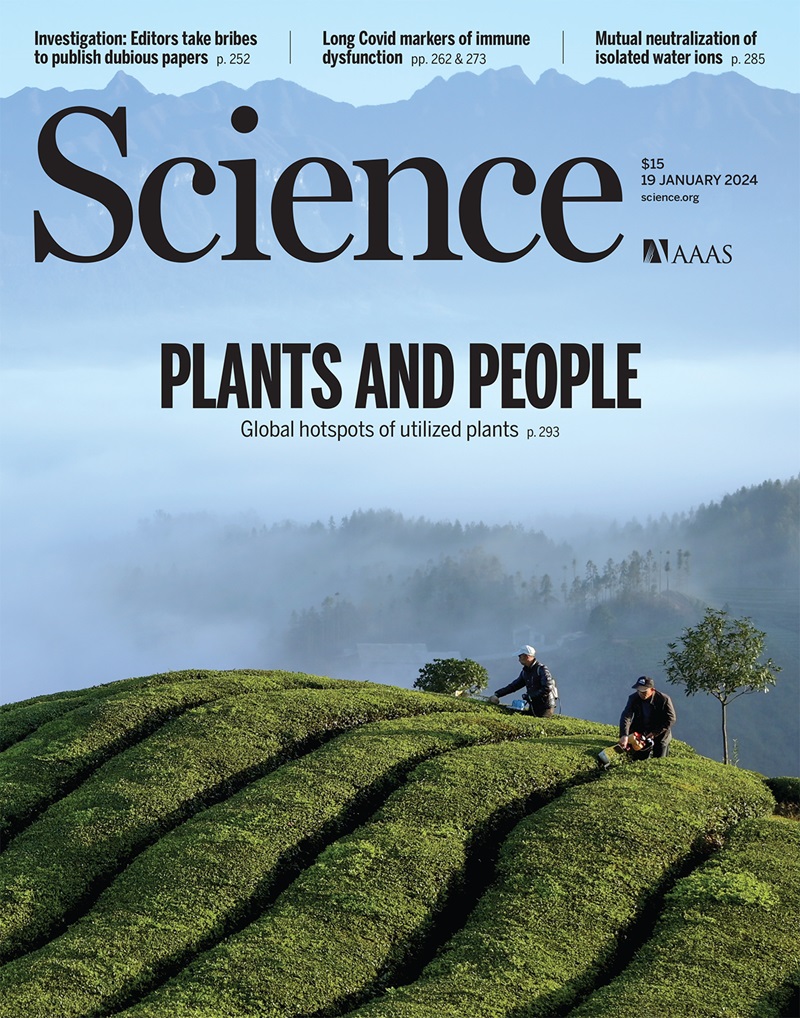Watching electronic ice melt
IF 44.7
1区 综合性期刊
Q1 MULTIDISCIPLINARY SCIENCES
Science
Pub Date : 2025-05-15
引用次数: 0
Abstract
One of the most familiar phase transitions on Earth is the freezing and melting of water. Underlying this transition is the competition between the kinetic energy of water molecules and the potential energy arising from their mutual interactions. When the temperature falls below the freezing point, the interaction energy wins this competition and water freezes. A two-dimensional (2D) system of electrons exhibits a similar competition between kinetic and potential energies that also gives rise to a freezing–melting transition. However, the nature of this transition in an electron system has remained mysterious for decades. On page 736 of this issue, Xiang et al. (1) report direct imaging of the melting and freezing of a Wigner crystal—a periodic 2D lattice of strongly interacting electrons. The observed intricate spatial patterns raise fascinating questions about the nature of this fundamental phase transition in the quantum realm.
观看电子冰融化
地球上最熟悉的相变之一是水的冻结和融化。这种转变的基础是水分子的动能和它们相互作用产生的势能之间的竞争。当温度降到冰点以下时,相互作用能赢得了这场竞争,水就冻结了。二维(2D)电子系统也表现出类似的动能和势能之间的竞争,这也导致了冻融转变。然而,几十年来,电子系统中这种转变的本质一直是个谜。在本期的第736页,Xiang等人(1)报道了维格纳晶体(一种由强相互作用电子组成的周期性二维晶格)融化和冻结的直接成像。观察到的复杂的空间模式提出了关于量子领域中这种基本相变本质的迷人问题。
本文章由计算机程序翻译,如有差异,请以英文原文为准。
求助全文
约1分钟内获得全文
求助全文
来源期刊

Science
综合性期刊-综合性期刊
CiteScore
61.10
自引率
0.90%
发文量
0
审稿时长
2.1 months
期刊介绍:
Science is a leading outlet for scientific news, commentary, and cutting-edge research. Through its print and online incarnations, Science reaches an estimated worldwide readership of more than one million. Science’s authorship is global too, and its articles consistently rank among the world's most cited research.
Science serves as a forum for discussion of important issues related to the advancement of science by publishing material on which a consensus has been reached as well as including the presentation of minority or conflicting points of view. Accordingly, all articles published in Science—including editorials, news and comment, and book reviews—are signed and reflect the individual views of the authors and not official points of view adopted by AAAS or the institutions with which the authors are affiliated.
Science seeks to publish those papers that are most influential in their fields or across fields and that will significantly advance scientific understanding. Selected papers should present novel and broadly important data, syntheses, or concepts. They should merit recognition by the wider scientific community and general public provided by publication in Science, beyond that provided by specialty journals. Science welcomes submissions from all fields of science and from any source. The editors are committed to the prompt evaluation and publication of submitted papers while upholding high standards that support reproducibility of published research. Science is published weekly; selected papers are published online ahead of print.
 求助内容:
求助内容: 应助结果提醒方式:
应助结果提醒方式:


